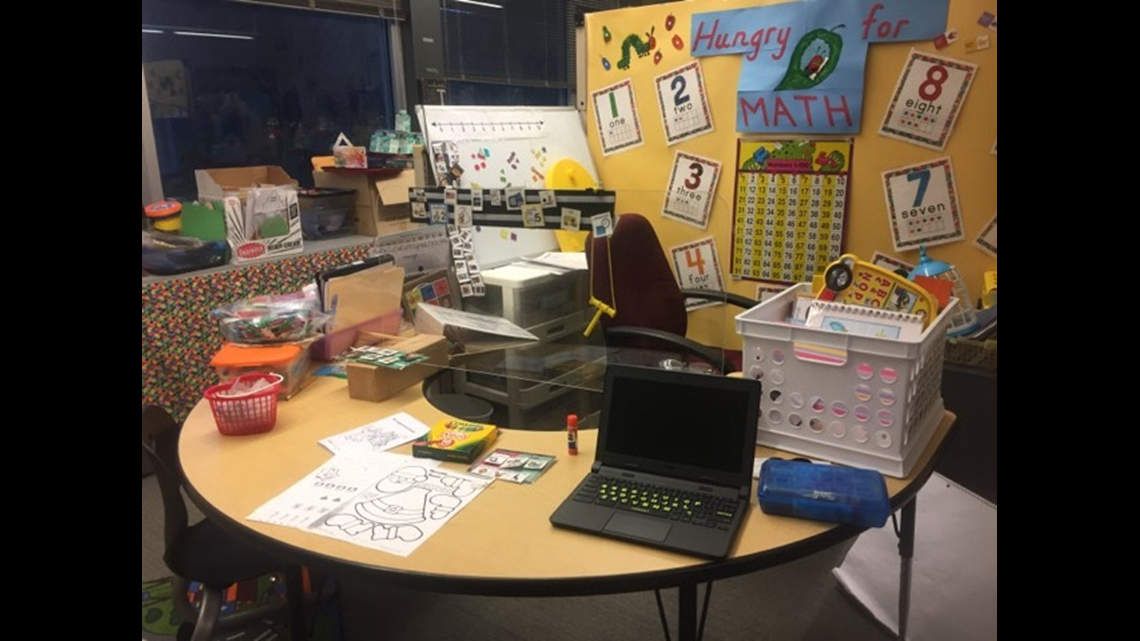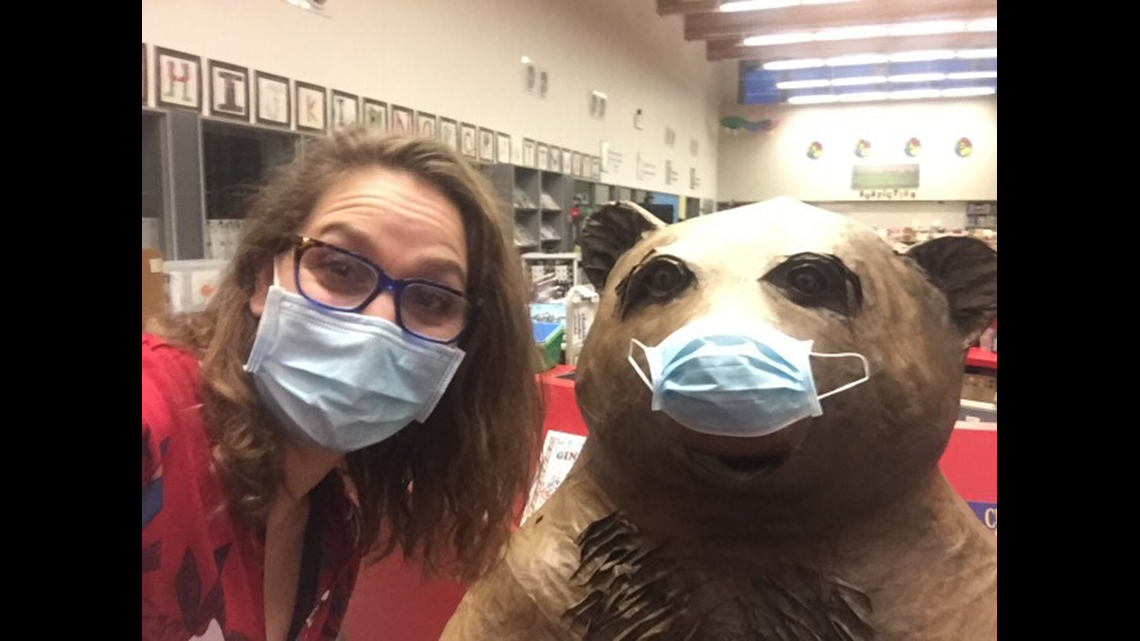CAMAS, Wash. — Schools all over are wrapping up fall term and heading into winter break. For many families, students and teachers, this school year so far has meant a lot of adapting for distance learning.
Throughout the last few months, we’ve talked to teachers all over about the challenges of online learning.
Now, months into the school year, many teachers are making sure to prioritize self-care, including Amy Campbell, a special education teacher in the Camas School District, located in Clark County.
Right now, on the Clark County Public Health website, the current COVID-19 activity level in the community is designated as “high” with about 450 cases per 100,000 people.
For the majority of the school year so far, the COVID-19 activity level has stayed in the “high” category. That has meant school districts are almost entirely remote, with exceptions for students with high need.
Campbell’s students at Helen Baller Elementary are part of the exception.
“I’m teaching virtual to some students and I’m teaching small group in person with others, and it’s the hardest work I’ve ever done in my life,” said Campbell, who was also named 2020 Washington Teacher of the Year.


At the beginning of the fall term, many teachers described challenges that included learning how to teach online and operate new platforms, and of course trying to connect with their students through a screen.
Campbell said what added to those challenges during fall term was that classified staff, like lunch and playground workers, throughout Clark County were furloughed because most students weren’t at school.
“It just hurts on a lot of levels, more ways than I can describe,” Campbell said.
Now, a few months into distance learning during a pandemic, she said there seems to be a cumulative fatigue that’s happening among both teachers and parents.
“It can feel like an around-the-clock job for both parties,” she said.
Campbell said teachers are exhausted. After their work day is technically done, many continue to work checking e-mails and texts, and responding to messages on their educational platforms. In addition, she said many teachers will also spend time preparing materials for the next day or recording videos for their students.


That’s why many teachers, including Campbell, are emphasizing self-care and boundaries, specific times for work and times to recharge.
“Picked up a few leaves in my yard, said a few gratitudes because that makes a big difference for me, then I was able to come back in, wiggle my mouse and look for emails again. It’s relentless,” said Campbell.
As the pandemic drags on, the stress continues to compound.
“I tell parents every year prior to COVID, ‘Thank you for trusting me with your children,’ and now I have parents sending their children to me in a pandemic and when I say, ‘Thank you for trusting me with your children,’ it means something completely different and it weighs on me a lot,” Campbell said.
She said she’s constantly worrying about the kids she has in class, the students outside of class, as well as her classified paraeducators who are in or out of class. All that worry she said, makes self-care that much more important.
But there have also been small wins that help her and her fellow general education teachers.


In the beginning of the year, she said many teachers didn’t have good strategies to get their kids to turn their cameras on and participate. But now, she said teachers will do things like ask students to respond to a question by showing their hands or use other ways to make sure they can verify the student’s attendance and participation.
“You watch how many kids come in [online] and you watch the number come up and you’re like ‘Woo! They’re all there.' and you get excited. It’s very different, it’s a weird situation,” said Campbell.
She’s looking forward to 2021 and hoping the COVID-19 situation improves. Her priority she said, is the safety and health of her students. So, if getting the new COVID-19 vaccine helps her ensure those things, she’s doing it.
Self-care tips for teachers
Here are some self-care tips Campbell wanted to share with her fellow teachers (but are also good general reminders those outside the teaching profession):
Make sure to check in with yourself and students frequently. This is super hard and we need to be able to get help to people who need it. It is okay to need help no matter who you are.
- Breathe, on your own and model strategies for students that that will help everyone re-center and focus on what we can do.
- Move. So much screen time is having an impact on all of us and we can try to counter with some stretching walking and remembering to take breaks. As days get shorter I have to be more intentional if I am going to make time to be outside.
- Find community. This is totally isolating on so many levels. Make sure you call and text friends or find safe ways to meet and check in with friends. I have found that having social times in my virtual classroom where kids can talk to me and each other is invaluable. As many districts attempt to limit virtual staff meetings so teachers can use time to prep and plan, there are few chances for people to connect. We all need to make time to connect.
- It is OK to have work boundaries. Lines are blurry right now as I bring my laptop back and forth from work to home. I have eaten too many meals in front of a screen and somedays it is the first and last thing I see in the day. I have found I have to block out time for me to recharge my batteries, watch some Netflix, have a non-work-related conversation with my husband, pet my dog or cook a favorite meal.
For families and other community members, she hopes people adhere to social distancing, wearing a mask, limiting gatherings, and washing hands so things will move back toward normalcy as soon as possible.

